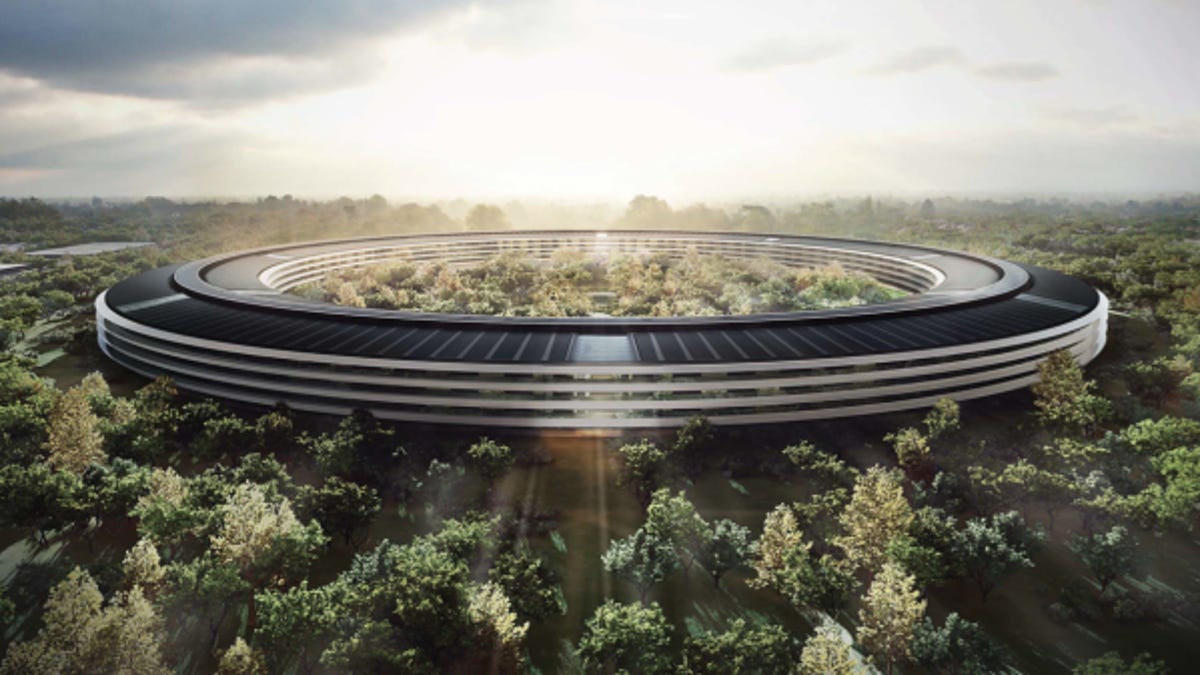Apple one step closer to building new 'spaceship' headquarters
Cupertino's planning commission approved Apple's plans to construct its brand new corporate home. A city council vote comes later this month, and a final vote next month.

On Tuesday, the company made one last plea to the community at a public discussion, and Wednesday's recommendation paves the way for a vote by the Cupertino city council on October 15 and a final vote on May 19.
The new campus, which will supplement and not replace Apple's current digs at 1 Infinite Loop, was Jobs' pet project. Months before he died, he paid a visit to the Cupertino city council to appeal for the ring-shaped, four-story, 2.8 million square foot, "spaceship"-looking building that would be built on land that formerly occupied by Hewlett Packard's campus.
The scope of the project has ballooned since Jobs first introduced it to the city council in mid-2011. Originally slated to accommodate 6,000 employees, the plans now designate space for up to 14,000 employees. The proposed structures include an auditorium for product unveilings, a four-story parking garage, and a fitness center. World famous UK-based architecture firm Foster + Partners is leading the project design, and the price tag will reportedly be close to $5 billion.
Similar to the high-end materials and designs used in its retail stores, Apple's campus reboot will feature many lavish touches, including towering panes of curved glass to outline the building, ceilings of polished concrete, and stone-infused floors more common in "museums and high-end residencies," rather than corporate offices, according to Bloomberg Businessweek.A few tidbits from Wednesday's meeting: Just like any other Apple presentation, this one came with a slickly-produced video. Dan Whisenhunt, the company's director of real estate and facilities, introduced a video featuring lead architect Norman Foster and others in charge of the site's development. One gem from the film is that the site's now infamous O-shaped structure was not the original vision. "It really grew into that born out of an intensive process," said Foster in the video. The plans were also inspired by Stanford's campus.
The development is to be completed in two phases. The first is estimated to take 32 months, or a little less than three years. Phase two will start soon after, though there is no timeline for completion. The plans also include a 600-seat restaurant with four-story glass sliding doors. Fruit from the orchards onsite are to be used at the dining facilities onsite.
The project has had its share of setbacks. In June, the city released a massive environmental impact review that brought up fine-tooth points that Apple would have to respond to and mitigate, including issues related to altered geology and air quality. Apple, for its part, has vowed to plant 6,200 trees on the site, after it removes some 3,620 trees to make room for construction. Residents have also been wary of the traffic problems it would bring to the area. Indeed, much of the deliberation Wednesday night was about safety and congestion coming out of the campus, and whether a main road should have three lanes or two as drivers make a left turn. (The commission said it was in favor of three.)
But despite some of the pushback, there has been overall support for the project from the city, unwilling to lose out on the taxes that Apple pays to Cupertino every year, plus $35 million in one-time fees for the building project. Shortly after the project was first pitched, former Cupertino Mayor Gilbert Wong even went so far as to say there was "no chance we're saying no" to the project getting under way.
The company has also made several tweaks to its plans to address concerns related to the project. Whisenhunt said the slated target for move-in is in 2016.

